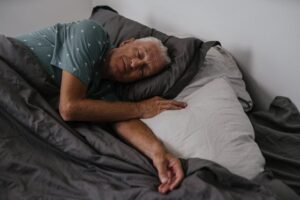Winterizing a home is essential for Canadian seniors to stay warm, safe, and energy-efficient during the cold months. Proper weatherization can help reduce heating costs, prevent potential health risks, and ensure the home remains comfortable. Here are some practical steps seniors can take to winterize their homes effectively.
1. Insulate Doors and Windows
Windows and doors are the primary culprits for heat loss in homes. Seniors should consider installing weather stripping or caulking around the edges of windows and doors to seal any gaps where cold air might enter. For older or single-pane windows, adding window insulation film can be a cost-effective solution. This film creates an additional barrier against the cold and is easy to install.
For a more permanent solution, seniors might look into upgrading to double- or triple-glazed windows, which provide superior insulation. Similarly, insulating door sweeps on the bottom of exterior doors can prevent drafts from creeping into the house.
2. Add Extra Insulation in Key Areas
Many older homes are not properly insulated, particularly in the attic, walls, and basement. Seniors should check these areas and add more insulation if necessary. Proper insulation helps to retain heat within the home, reducing the need for excessive heating. Fiberglass, spray foam, and cellulose are popular types of insulation, each with varying levels of effectiveness and cost.
Attics, in particular, benefit from increased insulation. Heat rises, and without sufficient insulation in the attic, it will escape through the roof. Seniors can save significantly on heating bills by ensuring their attic is well-insulated.
3. Seal and Insulate Ductwork
For homes with forced-air heating systems, ductwork plays a critical role in distributing warm air. However, leaky ducts can reduce the system’s efficiency by allowing heated air to escape. Seniors should inspect their ductwork for any leaks and use mastic sealant or metal tape to seal them.
Insulating the ducts can also prevent heat loss, particularly in unheated spaces like basements or attics. Properly sealed and insulated ducts ensure that the warm air from the furnace reaches all parts of the home effectively.
4. Maintain and Upgrade the Heating System
It’s important to make sure the home’s heating system is running efficiently before the winter begins. Seniors should schedule an annual furnace inspection and cleaning to ensure it is in good working condition. Replacing furnace filters regularly during the winter months also helps the system run more efficiently.
For those using older heating systems, upgrading to a more energy-efficient model, such as a high-efficiency furnace or a heat pump, can significantly reduce heating costs. Government rebates and incentives may be available for seniors who want to make energy-efficient home improvements.
5. Protect Plumbing from Freezing
Frozen pipes are a common winter hazard, leading to costly repairs and potential flooding. Seniors should insulate any exposed pipes, particularly those in unheated areas like basements, garages, and crawl spaces. Pipe insulation is affordable and easy to install, offering peace of mind against freezing temperatures.
It’s also wise to let faucets drip slightly during extremely cold periods to keep water flowing and reduce the risk of freezing. Additionally, seniors should locate their home’s water shutoff valve in case they need to turn off the water quickly due to a burst pipe.
6. Install or Check a Programmable Thermostat
A programmable thermostat allows seniors to regulate their home’s temperature more effectively, ensuring that the heat is lower when they’re sleeping or away from home, and higher when they’re active inside the house. This not only saves energy but also ensures comfort throughout the day.
Some smart thermostats can be controlled remotely via a smartphone, which is particularly helpful for seniors with mobility issues. These thermostats can also provide energy consumption reports, helping seniors make informed decisions about their heating usage.
7. Consider Energy-Efficient Window Coverings
Heavy curtains or thermal blinds can be used to insulate windows from the inside. These window treatments provide an additional layer of protection against the cold and can help trap heat inside the room. Seniors should keep curtains open during sunny winter days to let natural heat from the sun warm their home, and then close them in the evening to retain the warmth.
Conclusion
Winterizing a home is a key task for Canadian seniors to ensure comfort and safety during the cold months. By taking simple steps like insulating doors and windows, maintaining the heating system, and protecting plumbing, seniors can make their homes more energy-efficient and save on heating costs while staying warm throughout the winter.








